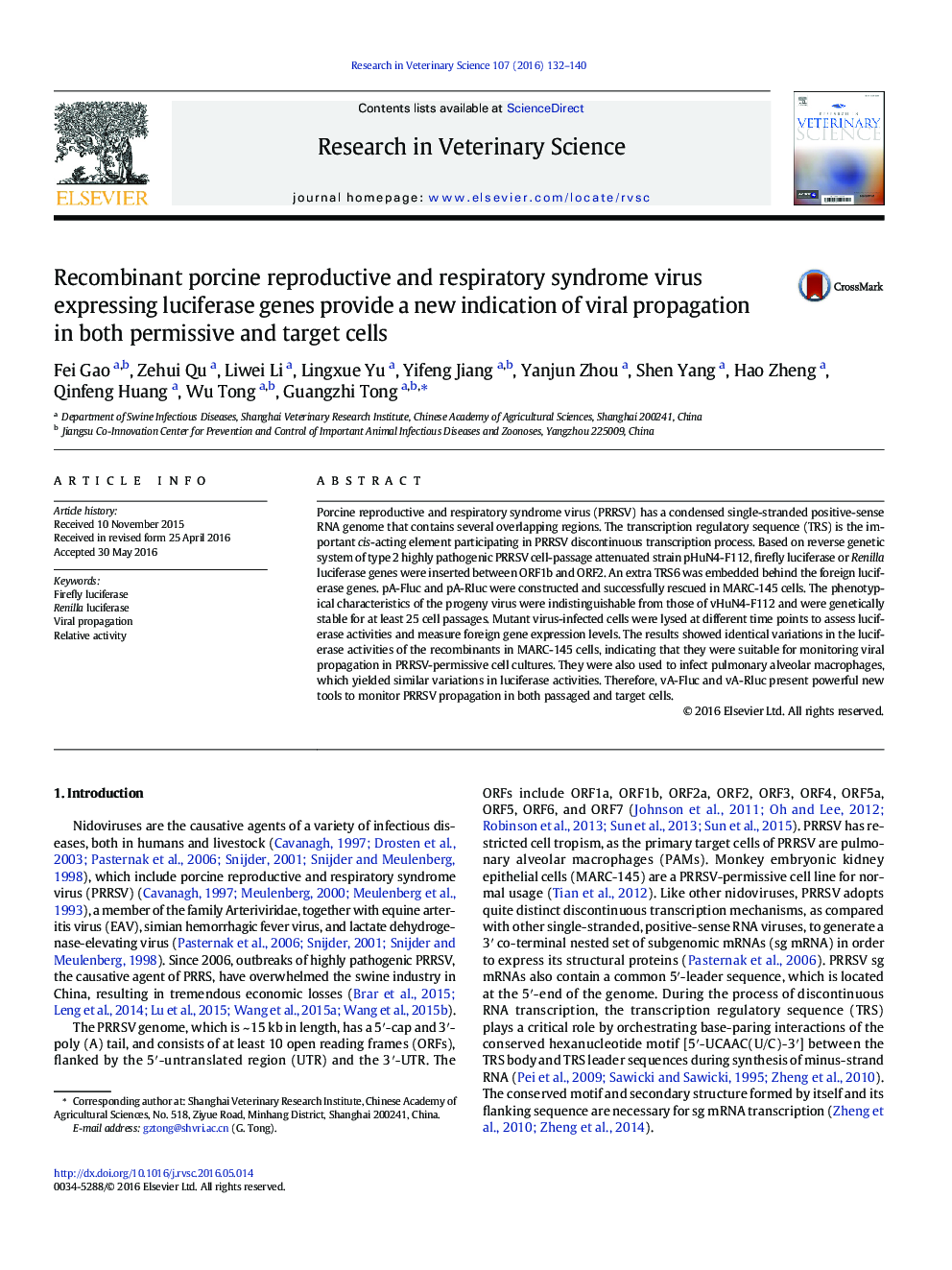| Article ID | Journal | Published Year | Pages | File Type |
|---|---|---|---|---|
| 5794461 | Research in Veterinary Science | 2016 | 9 Pages |
â¢Luciferase gene could be expressed as a unique sg mRNA in type2 PRRSV genome.â¢Recombinant virus could be genetically stable in at least 25 cell passages.â¢Recombinant vA-Fluc and vA-Rluc provide new indication for viral propagation.
Porcine reproductive and respiratory syndrome virus (PRRSV) has a condensed single-stranded positive-sense RNA genome that contains several overlapping regions. The transcription regulatory sequence (TRS) is the important cis-acting element participating in PRRSV discontinuous transcription process. Based on reverse genetic system of type 2 highly pathogenic PRRSV cell-passage attenuated strain pHuN4-F112, firefly luciferase or Renilla luciferase genes were inserted between ORF1b and ORF2. An extra TRS6 was embedded behind the foreign luciferase genes. pA-Fluc and pA-Rluc were constructed and successfully rescued in MARC-145 cells. The phenotypical characteristics of the progeny virus were indistinguishable from those of vHuN4-F112 and were genetically stable for at least 25 cell passages. Mutant virus-infected cells were lysed at different time points to assess luciferase activities and measure foreign gene expression levels. The results showed identical variations in the luciferase activities of the recombinants in MARC-145 cells, indicating that they were suitable for monitoring viral propagation in PRRSV-permissive cell cultures. They were also used to infect pulmonary alveolar macrophages, which yielded similar variations in luciferase activities. Therefore, vA-Fluc and vA-Rluc present powerful new tools to monitor PRRSV propagation in both passaged and target cells.
Graphical abstractDownload full-size image
